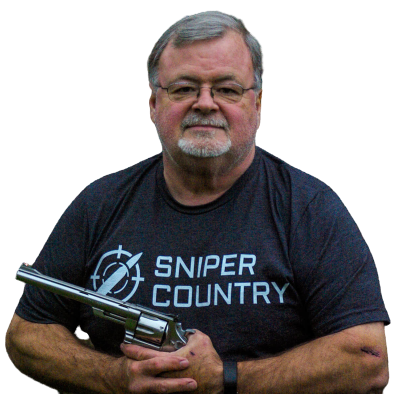At first glance, the Mossberg Shockwave looks like a sawed-off shotgun that would require an NFA (National Firearms Act) tax stamp to legally own. In reality, it is 100% legal to own—from a federal standpoint—and is a devastating close-quarters weapon.
The Mossberg Shockwave 12-gauge uses an innovative design to classify it as a firearm and not a (sawed-off) shotgun and, thus, legal to own. Central to its design and legality is the Raptor grip and an overall length of just over 26 inches. This makes it ideal for home defense, vehicle carry, or concealed carry.
In this Mossberg Shockwave review, Colonel Jim Smith, a highly experienced law enforcement officer and Shockwave owner, provides his views on using the weapon both for duty purposes and personal defense. And in addition to his real-world experience with the Shockwave, we will also cover all of the specs, features, legality, and handling techniques which potential buyers should know when considering acquiring this weapon.

The Quick Take
The Mossberg Shockwave 12-gauge is a legal, compact firearm ideal for vehicle / ATV carry, home defense, or tactical use. Despite its compact design, it has a three-inch chamber and can carry 4+1 rounds of 3†shells or 5+1 of 2.75†shells, giving it ample ability to deal misery in the close-range environment.
However, as Colonel Smith’s review will attest, this is not a beginner’s weapon. Proper technique is required to handle the recoil and use the weapon safely and effectively. Even with proper technique, it is not a weapon that most will want to shoot repeatedly at the range. And it definitely is not a firearm suitable for hunting.

Mossberg Shockwave: Features and Specs
While this Mossberg Shockwave review focuses on the 12-gauge model, Mossberg also offers it in 20-gauge and .410 which may be attractive to those seeking more manageable recoil and handling. Like most tactical weapons, the Shockwave can be accessorized, but following are the base-model features and specs for the 12-gauge:
| Feature | Spec |
| Gauge | 12-gauge (also available in 20-gauge and .410) |
| Action | Pump |
| Chamber | 3†|
| Capacity | 4+1 of 3â€, 5+1 of 2.75â€, and 8+1 of 1.75†(with an adapter) |
| Barrell Length | 14.37†|
| Overall Length | 26.37†|
| Weight | ~5.3 Lbs. (unloaded) |
| Grip | Raptor bird’s head pistol grip |
| Sights | Bead front sight |
| Legal Classification | “Firearmâ€â€”not subject to NFA regulations |
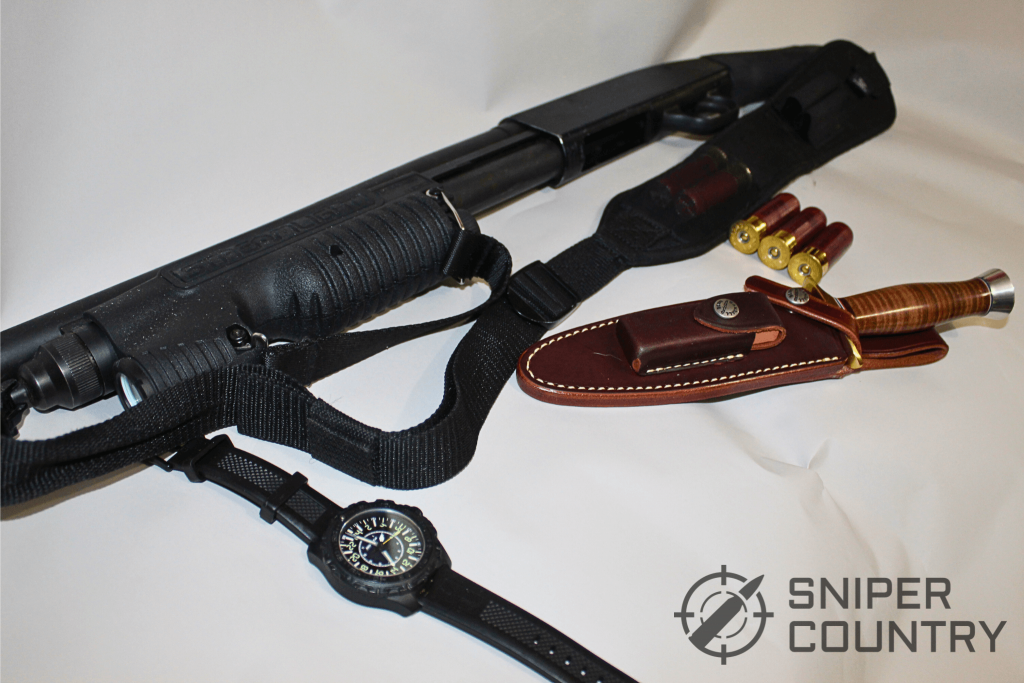
What Makes the Shockwave Legal?
From a federal-firearms-regulatory viewpoint, the Mossberg Shockwave is perfectly legal. It is not considered a short-barreled shotgun because it is not designed to be fired from the shoulder. It can’t be classified as an NFA “Any Other Weapon†because its overall length is greater than 26â€.
Because the Shockwave has no characteristics regulated by the NFA, there is no tax stamp or special paperwork required to own it. However, some states—e.g., California, New Jersey, New York, and Massachusetts—restrict or prohibit its possession. Potential buyers should always check their local and state laws before purchasing or possessing this weapon.
Shockwave Design & Build Quality
The Shockwave is based on Mossberg’s Model 590 which has long history of reliable use in both military and law enforcement applications. Recognized as a premier firearms manufacturer, Mossberg provides unparalleled quality and workmanship in all of their firearms offerings. Plus, in this era of offshore firearm manufacturing, Mossberg manufactures over 90% of their firearms in America at their Eagle Pass, Texas facility.
The foundation of the Shockwave is its solid pump action and tank-like construction. The pump action is dual railed with double extractors assuring solid pump action with reliable extraction of the fired hull. In fact, this is an almost instinctive reaction while firing the Shockwave as it seems to “automatically†chamber the next round in recoil.
The textured Raptor grip and forend strap help to manage the recoil. As will be described later in this review, there is a bit of an art to handling the recoil and using the weapon effectively. But with practice and patience, most owners find the Shockwave manageable to shoot.
The Shockwave’s short barrel and overall length make it ideal for tight spaces, but also make it difficult to aim quickly. Many shooters find the Shockwave to be challenging when acquiring targets with the bead site. Ghost ring, red dot, and laser sights are available which may aid in target acquisition, but good technique is the key.
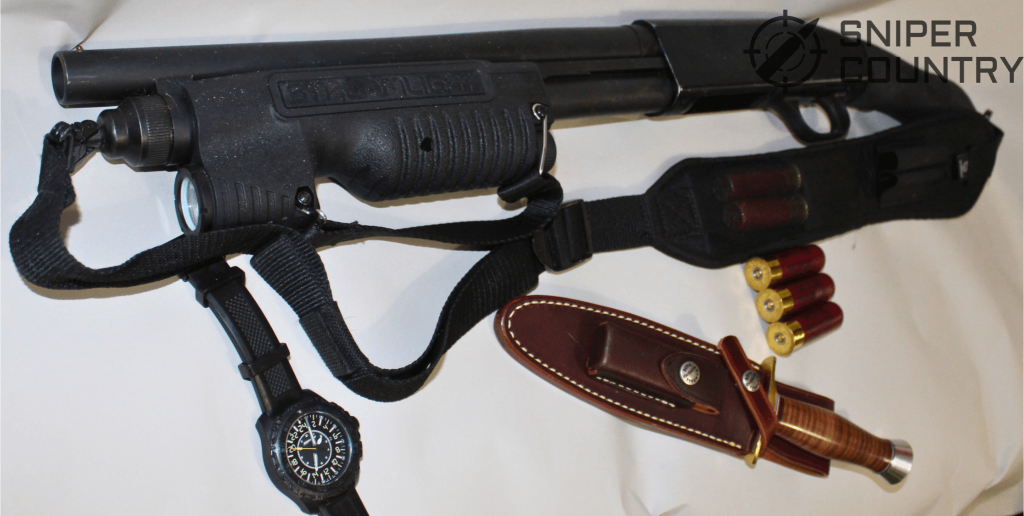
Shockwave Recoil & Handling
Start Slow
When the Mossberg Shockwave 12-gauge is discussed, the main topic of conversation seems to always center around recoil and handling. As we said, there is a bit of an art to handling the Shockwave; it is not a weapon for beginners. Only experienced shotgun shooters should use the Shockwave because its “point-to-shoot†method of fire requires a skilled shooter to control muzzle direction and the substantial recoil.
Key to managing Shockwave recoil is to start off shooting bird shot or low-recoil buckshot loads. At all costs, new shooters should avoid high-brass or magnum buckshot rounds. It is always recommended to use the forend strap when shooting the weapon.
Underscoring the need to start slow is that with heavy buckshot loads, the robust recoil and muzzle flip of the Shockwave has the shooter in many instances retract the forend and chamber the next round with little voluntary action. This places the “ready-to-fire†Shockwave in the recoil position, safety off, potentially with the firing finger on the trigger, and a live round ready to discharge.
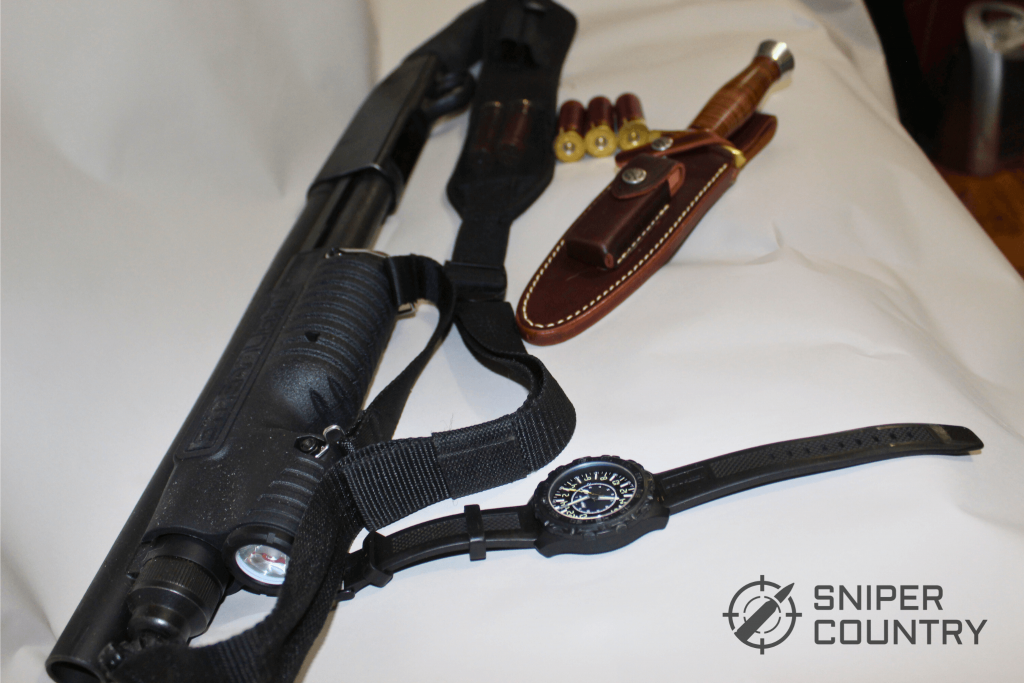
Proper Technique
As with any weapon, mastering the Shockwave comes down to practice and proper technique. There are three basic methods for controlling and handling the Shockwave:
Push/Pull: With this method, the Shockwave is handled much like an archery bow where the shooter extends the weapon and pushes against the forend while pulling back on the grip.
Hip-Fire: As the name implies, the hip-fire method braces the grip against the hip while pushing forward on the forend. Many shooters start with this method. Its primary disadvantage is the shooter must be standing which may not always be the case when using the weapon for defense.
Chest Anchor: This method is similar to the hip-fire but instead braces the handgrip against the side of the chest near the armpit while again pushing forward on the forend.
A very informative video on shooting and handling the Shockwave can be found here.
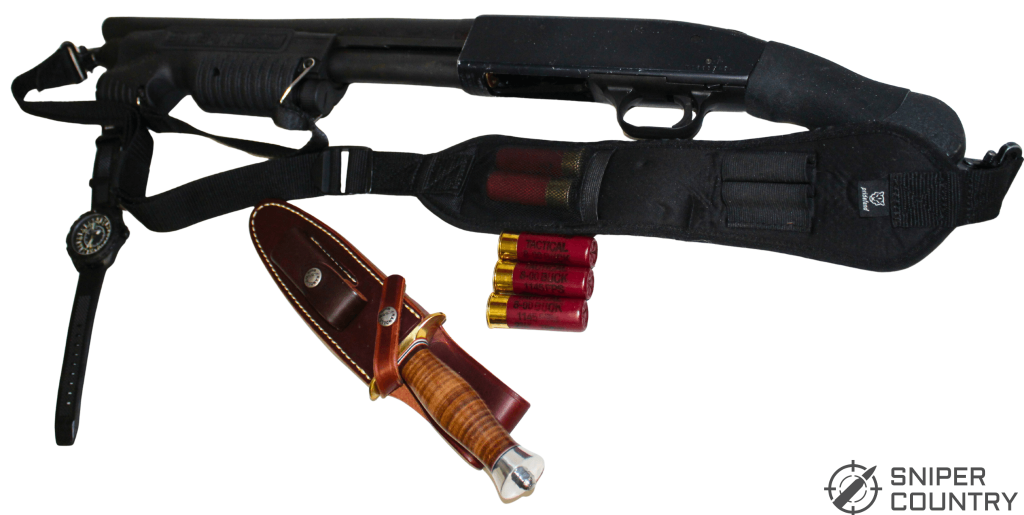
Recoil-Management Accessories
A common technique some Shockwave owners use is to install an adapter on the weapon which allows it use 1.75†mini shells. The appeal of mini shells is their light recoil. The disadvantage is the reduced payload of the shell—i.e.., seven pellets of No. 4 buckshot and four pellets of No.1 buckshot—which do not pattern well and may not get the job done.
Other approaches to managing recoil can include using an aftermarket traditional pistol-style grip or grip gloves. Some shooters use a low-tech approach by wrapping the grip with friction tape.
Mossberg Shockwave Review from a Law Enforcement Officer’s Perspective
One of our readers and contributors, Colonel Jim Smith, provided us with his thoughts on the Mossberg Shockwave. Colonel Smith brings to the table decades of public safety and law enforcement experience. He specializes in firearms selection and training, use-of-force procedures, and has investigated numerous firearm-related incidents. A prolific shooter and gun owner, here is what he had to say about the way he handles, shoots, and uses the Shockwave:
The Shockwave is best used in a “close-quarters†setting at a range of 50 feet or less. I carry one in the patrol vehicle secreted between the driver’s seat and radio console. This allows me to reach the Shockwave with one hand, insert my other hand in the forend strap, and quickly chamber a round. I can then thumb the safety off, all while keeping the Shockwave below the line of sight of anyone outside the vehicle. One can then point and shoot the Shockwave without exiting the vehicle. With practice, this can be done in less than two seconds.Â
The technique used by many is to (almost instinctively) raise the Shockwave to eye level acquiring the target with the bead sight. They then use the “push/pull†method. This allows positive control but can exaggerate muzzle flip in recoil. The issue is that many shooters also instinctively bring the Shockwave close to their face to aim it. This is often a mistake that can allow the robust recoil to result in the Shockwave striking the shooter in the face. With close-range targets, this type of extension is usually not needed as the instinctive point-to-shoot method is adequate to hit targets under 15 yards.Â
In terms of the weapon, it is incredibly reliable and has the same quality and durability of the full-size Mossberg shotguns that I own and shoot. In addition to an offensive/defensive weapon, my agency also carries them in Active-Incident Breaching Bags (ABBY). In this application, they are loaded with breaching rounds to aid officers in gaining access through locked doors which are resistant to more traditional forcible entry techniques and tools.Â
The Shockwave can also be carried by plain clothes officers during high-risk settings. It can be slung under a suit coat, jacket, or shirt worn over a t-shirt in a concealed manner. This is a devastating weapon at close range, providing overwhelming firepower and the ability to engage multiple threats with neutralizing rounds (usually one round per target). However, extensive practice is needed to conceal, unsling, aim, and engage hostile targets with the Shockwave.
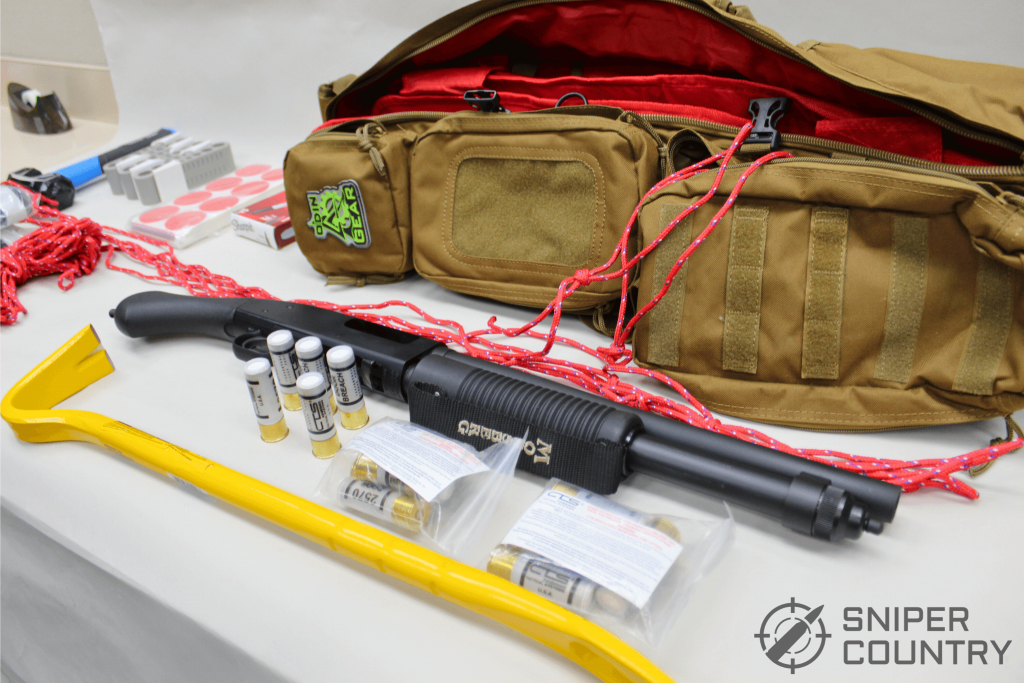
Use Cases & Real-World Performance
Home Defense
Many people acquire the Shockwave for home defense. While maneuverable in tight hallways, effective use of the weapon requires extensive training. Another issue highlighted by Colonel Smith is the secure storage of the weapon away from children and the decision to have a round chambered or not. While racking a round lets an intruder know you are there, leaving the weapon with a round chambered exposes the shooter to a possible accidental discharge if the weapon is dropped. For civilian use, he especially recommends a laser and a forend tactical light as invaluable accessories.
Truck/ATV Weapon
As Colonel Smith indicated, vehicle use of the Shockwave is the forte of its design since it can be stored out of sight (in a scabbard), but is easily accessible. If carried on an ATV, the Shockwave must be carried in a scabbard. This affords the positive location of the firearm while also protecting it.
Range Use
While the Shockwave can be fun to shoot at the range, it is not a weapon for volume shooting. Colonel Smith also stresses the importance of controlling the weapon during recoil so as not to endanger other shooters or observers.
Hunting
As referenced above, the Shockwave is not a suitable hunting firearm. It could, however, function as a defense weapon against animal attacks from feral hogs, coyotes, or wolves.
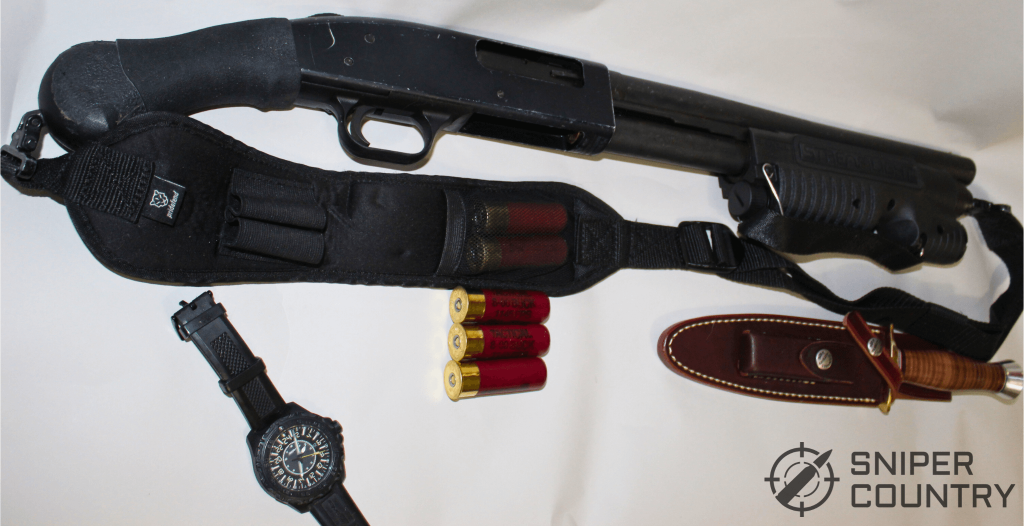
Mossberg Shockwave vs. the Competitors
Because of Colonel Smith’s personal experience with the Shockwave and several of its competitors, we asked him to make some comparisons.
Shockwave vs. the Remington TAC-14
The Shockwave is a superior firearm than the Remington TAC-14. This is because the Remington has no forend strap to assist in control of the shotgun during recoil. Plus, it has a capacity of 4 + 1 as opposed to the 5 + 1 in the Shockwave. These are dealbreakers for the TAC -14 in terms of safety, control, and magazine capacity.
Shockwave vs. the Full-Size Mossberg 590 or Remington 870
The Shockwave occupies a unique niche. It performs well as a close-range, easily concealed firearm. However, in terms of capacity or where targets must be neutralized at ranges beyond 50 feet, a shoulder-fired shotgun—such as a full-sized Mossberg 590 or Remington 870—is recommended. This provides better aiming abilities, more ammunition capacity, and easier operation.
Overall Advantages
The Shockwave outperforms the competitors in terms of less weight, model options, larger magazine capacity, and more safety features. Its ability to be purchased without a tax stamp and its legality in most states and locales is a huge plus.
Limitations
As noted earlier, the Shockwave requires substantial practice to aim and control as opposed to full-sized shotguns. It also has a lower magazine capacity than most tactical shotguns.
Best Ammo & Accessories
Ammunition
Having investigated numerous home-defense shootings, including those with shotguns, Colonel Smith provided some additional valuable insight:
While most people naturally think of buckshot as the ideal home defense round, they often fail to realize how much overpenetration can occur through walls, doors, and even the exterior of the house. If you insist on buckshot, I recommend low-recoil #4 buckshot. What is also very effective is heavy birdshot such as #4 or BBs. You should also always take into consideration what or who is downrange of the intruder.
Accessories
As a personal owner of a Shockwave and a duty user, Colonel Smith also weighed in on accessories:
Opsol Mini Clip: The Opsol Mini Clip is an adapter allowing mini shells to be used to reduce Shockwave recoil. While the adapter is easy to install and appears to be a reliable product, I am not a fan of using mini shells in life-protection scenarios.Â
Side-saddle shell holders: With the restricted capacity of the Mossberg Shockwave 12-gauge, the GG&G Side-saddle is a good addition. I use a Pridefend sling which allows the carrying of additional shotshells.
Laser saddle or rail-mounted red dot sights: The Shockwave is drilled and tapped for optics and a sidesaddle laser is a more attractive option than a red dot. But that is just my personal preference for the Shockwave.
Sling attachments: The Shockwave comes pre-tapped for sling mounts. In my view, a sling is a necessity as it affords carrying the Shockwave when you need to remove it from your hands to complete other tasks and makes it safer for carrying the Shockwave.
Flashlight mounts: The Shockwave is conducive to adding a flashlight mount and a tactical flashlight. For low-light situations, these are essential.
Pros & Cons of the Mossberg Shockwave 12-Gauge
Pros
- It is ultra-compact, easy to store, and easily concealed under a jacket or in a vehicle
- A non-NFA shotgun, the Shockwave is legal in most locales without the NFA hassle and tax stamp.
- Mossberg reliability and controls are a huge plus to the Shockwave. The standard placement of the slide release and top-mounted safety make the Shockwave consistent with other Mossberg shotguns.
- The customization potential on the Shockwave is large. This includes flashlight, sidesaddle laser, grip enhancements, slings, shotshell carriers, and the like.
- Serious firepower in tight quarters is the niche filled by the Shockwave. It has numerous use cases, including home defense, law enforcement, dignitary protection, and military applications.
Cons
- There is harsh recoil for new shooters. Therefore, experienced shooters with plenty of practice with the Shockwave are the best candidates for effective use of this shotgun.
- Difficulty in precise aiming is a downside, but as a rule, the niche filled by the Shockwave does not need this.
- It has limited practical use unless one has a specific need such as vehicle/ATV protection, home defense, or dignitary protection.
- State-specific restrictions apply as some states and locales do not allow possession of the Shockwave.
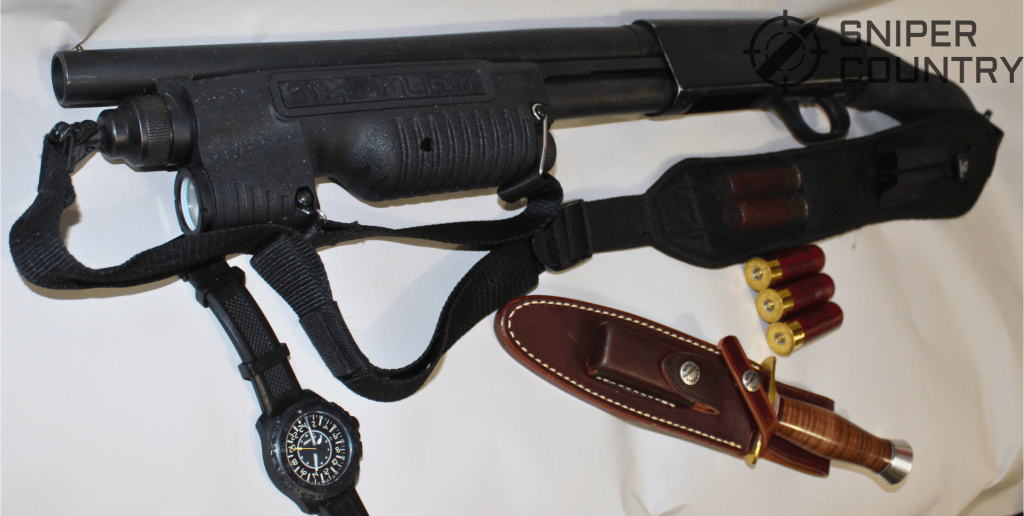
Is the Mossberg Shockwave 12-Gauge Worth It?
The Shockwave isn’t for everyone and has limited applications. It is for experienced shooters who are willing to put in the time and practice to master the weapon effectively. It is not a beginner’s gun or for those with a low tolerance to recoil. But for law enforcement, those seeking home or vehicle protection, or as part of a bug-out setup, it is an ideal choice.

FAQs
No, the Shockwave is classified as a firearm by federal firearm regulations. Although called a “shotgun,†the Shockwave technically is not.
Because the Shockwave does not possess any of characteristics requiring an NFA tax stamp, it is not required. However, some states and locales prohibit the Shockwave’s possession or purchase.
Definitely not. If a stock is added, the Shockwave will become classified as a short-barreled shotgun making it illegal without an NFA tax stamp.
The suggested load depends upon its use. For home defense, low recoil #4 buckshot is the hottest load recommended. Outside of this setting, low-recoil ammunition of the type needed to meet the threat is suggested.
For the occupant willing to practice and become competent with the weapon, it is an excellent choice, especially when outfitted with accessories such as a laser and tactical flashlight. For the casual shooter, there are better options.
Â
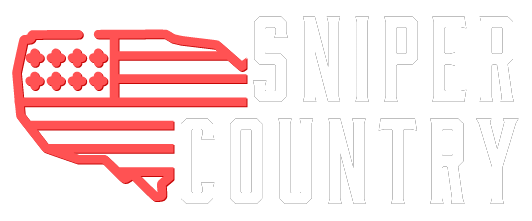
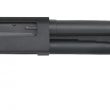


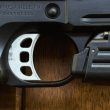



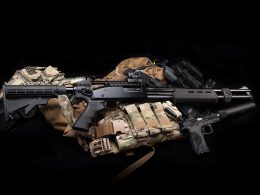
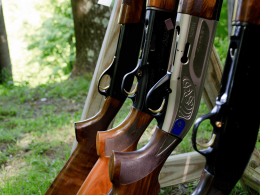
![Best Shotgun Lights [2018]](https://www.snipercountry.com/wp-content/uploads/2018/06/Best-Shotgun-Lights-2018-260x195.jpg)
